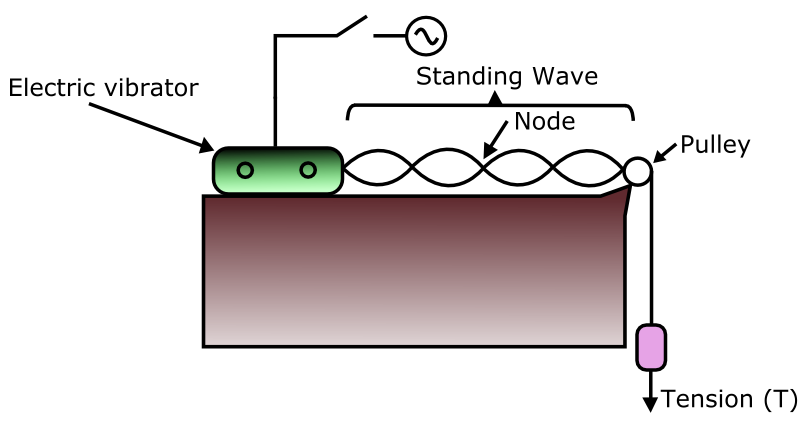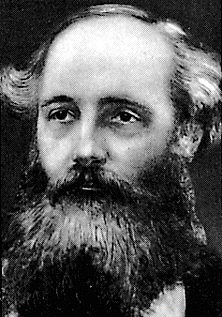Melde's experiment on:
[Wikipedia]
[Google]
[Amazon]
 Melde's experiment is a scientific experiment carried out in 1859 by the
Melde's experiment is a scientific experiment carried out in 1859 by the
 Wave phenomena in nature have been investigated for centuries, some being some of the most controverted themes in the history of science, and so the case is with the wave nature of
Wave phenomena in nature have been investigated for centuries, some being some of the most controverted themes in the history of science, and so the case is with the wave nature of
German
German(s) may refer to:
* Germany (of or related to)
** Germania (historical use)
* Germans, citizens of Germany, people of German ancestry, or native speakers of the German language
** For citizens of Germany, see also German nationality law
**Ge ...
physicist
A physicist is a scientist who specializes in the field of physics, which encompasses the interactions of matter and energy at all length and time scales in the physical universe.
Physicists generally are interested in the root or ultimate cau ...
Franz Melde
Franz Emil Melde (March 11, 1832 in Großenlüder near Fulda – March 17, 1901 in Marburg) was a German physicist and professor. A graduate of the University of Marburg under Christian Ludwig Gerling, he later taught there, focusing primar ...
on the standing waves produced in a tense cable originally set oscillating by a tuning fork
A tuning fork is an acoustic resonator in the form of a two-pronged fork with the prongs ( tines) formed from a U-shaped bar of elastic metal (usually steel). It resonates at a specific constant pitch when set vibrating by striking it agains ...
, later improved with connection to an electric vibrator. This experiment, "a lecture-room standby", attempted to demonstrate that mechanical waves undergo interference phenomena. In the experiment, mechanical waves traveled in opposite directions form immobile points, called node
In general, a node is a localized swelling (a "knot") or a point of intersection (a vertex).
Node may refer to:
In mathematics
* Vertex (graph theory), a vertex in a mathematical graph
*Vertex (geometry), a point where two or more curves, lines ...
s. These waves were called standing waves by Melde since the position of the nodes and loops (points where the cord vibrated) stayed static.
Standing waves were first discovered by Franz Melde
Franz Emil Melde (March 11, 1832 in Großenlüder near Fulda – March 17, 1901 in Marburg) was a German physicist and professor. A graduate of the University of Marburg under Christian Ludwig Gerling, he later taught there, focusing primar ...
, who coined the term "standing wave" around 1860. Melde generated parametric oscillations in a string by employing a tuning fork to periodically vary the tension at twice the resonance frequency of the string.Melde, F. (1859) "Über Erregung stehender Wellen eines fadenförmigen Körpers" n the excitation of standing waves on a string ''Annalen der Physik und Chemie'' (Ser. 2), vol. 109, pages 193-215.
History
 Wave phenomena in nature have been investigated for centuries, some being some of the most controverted themes in the history of science, and so the case is with the wave nature of
Wave phenomena in nature have been investigated for centuries, some being some of the most controverted themes in the history of science, and so the case is with the wave nature of light
Light or visible light is electromagnetic radiation that can be perceived by the human eye. Visible light is usually defined as having wavelengths in the range of 400–700 nanometres (nm), corresponding to frequencies of 750–420 te ...
. In the 17th century, Sir Isaac Newton
Sir Isaac Newton (25 December 1642 – 20 March 1726/27) was an English mathematician, physicist, astronomer, alchemist, theologian, and author (described in his time as a " natural philosopher"), widely recognised as one of the g ...
described light through a corpuscular theory. The English
English usually refers to:
* English language
* English people
English may also refer to:
Peoples, culture, and language
* ''English'', an adjective for something of, from, or related to England
** English national ide ...
physicist Thomas Young later contrasted Newton's theories in the 18th century and established the scientific basis upon which rest the wave theories. At the end of the 19th century, at the peak of the Second Industrial Revolution
The Second Industrial Revolution, also known as the Technological Revolution, was a phase of rapid scientific discovery, standardization, mass production and industrialization from the late 19th century into the early 20th century. The Fi ...
, the creation of electricity
Electricity is the set of physical phenomena associated with the presence and motion of matter that has a property of electric charge. Electricity is related to magnetism, both being part of the phenomenon of electromagnetism, as describ ...
as the technology of the era offered a new contribution to the wave theories. This advance allowed Franz Melde to recognize the phenomena of wave interference and the creation of standing waves. Later, the Scottish physicist James Clerk Maxwell
James Clerk Maxwell (13 June 1831 – 5 November 1879) was a Scottish mathematician and scientist responsible for the classical theory of electromagnetic radiation, which was the first theory to describe electricity, magnetism and li ...
in his study of the wave nature of light succeeded in expressing waves and the electromagnetic spectrum
The electromagnetic spectrum is the range of frequencies (the spectrum) of electromagnetic radiation and their respective wavelengths and photon energies.
The electromagnetic spectrum covers electromagnetic waves with frequencies ranging fro ...
in a mathematical formula.
Principle
A string undergoing transverse vibration illustrates many features common to all vibrating acoustic systems, whether these are the vibrations of a guitar string or the standing wave nodes in a studio monitoring room. In this experiment the change in frequency produced when the tension is increased in the string – similar to the change in pitch when a guitar string is tuned – will be measured. From this the mass per unit length of the string / wire can be derived. This is called as the principle of the Melde's Experiment Finding the mass per unit length of a piece of string is also possible by using a simpler method – a ruler and some scales – and this will be used to check the results and offer a comparison.See also
*Sonar
Sonar (sound navigation and ranging or sonic navigation and ranging) is a technique that uses sound propagation (usually underwater, as in submarine navigation) to navigate, measure distances (ranging), communicate with or detect objects on o ...
* Wind instruments
A wind instrument is a musical instrument that contains some type of resonator (usually a tube) in which a column of air is set into vibration by the player blowing into (or over) a mouthpiece set at or near the end of the resonator. The pitc ...
* Sonometer
A monochord, also known as sonometer (see below), is an ancient musical and scientific laboratory instrument, involving one (mono-) string ( chord). The term ''monochord'' is sometimes used as the class-name for any musical stringed instrument h ...
References
{{DEFAULTSORT:Melde's Experiment Wave mechanics